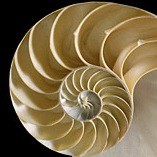This is a question many ask, somehow puzzled as to why the Quran is not in chronological order. I have an answer for this on this blog: because the Quran is for all time, and it’s not about the history of Islam or the Quraish in the usual “just the facts” way (dates and genealogies as per the “many human hands wrote it” Bible). It conveys the Truth, and truth is immortal, timeless. Something out of vogue these days. Allah Himself is eternal, and sent us an eternal message in time. So of course the message will be eternal, timeless. Hence it’s not about chronologies and lineages – it’s about righteousness and piety in an age where money is god and banks are temples, quiet and well-funded, like places of worship. Nouman Ali Khan summarizes here why the order of the Quran now is Divinely intended, without a shadow of doubt. (You can also check out his course on the subject.)
Order of surahs
Quran Transforms Zodiac to Signs of Ethical Path
StandardAn old blog post – “Why 114 Chambers?” – revamped and published on its original date – explains how zodiac symbolism is properly interpreted as guideposts to the Way of Allah. The post goes into brief details of each constellation’s “sign” as exemplified in the Quran, showing these placements of the suras correlate with both the Hijri months and Zodiac signs in uncanny ways that point to —> ethical behavior. For those who wish to “cut to the chase” and see what it all boils down to, the final set of principles derived from this study are shown below. Adding a reference to the discovery of an ancient Arab zodiac not mentioned in the above-linked post.
Continue readingThe Quran’s Arrangement Is Entirely by His Design
StandardThis may seem to be an obvious “given” any Muslim would deem true of the Quran. Yet surprisingly other ideas have made their way into “mainstream” Islamic belief. This article addresses the history of compiling and numbering the Quran, an interesting subject indeed, fleshed out here in great detail. But in the process states this:
The order of the surahs was not based on the order the archangel Gabriel gave them to Prophet Muhammad, but on the consensus of the companions. (Emphasis mine.)
With all due respect, this is an assumption based on anecdotal and certainly non-Quranic sources that directly contradicts the Quran, a fact of which the author(s) of this article and possibly also their source(s) may not have been fully aware. Although the order of revelation differs from the final arrangement, this is by Allah’s design, and the final arrangement was given directly through Jibreel (Gabriel) to prophet Mohammad, not a decision made by sahaba after his death. Saying that it was presumes it is somehow out of Allah’s jurisdiction – while we should know that everything is in Allah’s jurisdiction.
Continue readingEvidence of Quranic Architecture as Divinely Ordained
StandardAs explained in my Quranic Architecture page as well as Quranic Architecture Summary post, this site presents an entirely new vision of the Quran’s arrangement (order of surahs) and organization (from mid-life in time to edges-of-life closer to timelessness) as forming a spiral correlated to the shape of a chambered nautilus shell, where each surah fits into a separate chamber, naturally descending in size from outer to inner with the final Surah Al-Nass – people – in the center. It shows how the Quran’s message is not randomly arranged but rather forms a surprisingly precise fit in what has become known as an especially beautiful example of sacred geometry found in nature. The discovery of the Birmingham Manuscript pictured above, showing chapter divisions clearly marked and radiocarbon dated to the period of prophet Mohammad’s lifetime, provides physical evidence that this precise arrangement of surahs was indeed sent by Allah the Exalted with the text itself, described with more proofs below.
Continue readingWhy 114 Chambers?
StandardThe Quran exhibits its divine origin in not only the content or message, but also in its structure. First, it presents an idea for the overall “architecture” of the whole Quran arranged as a chambered nautilus shell where each chamber contains one sura. These chambers are arranged in a series of 12 suras, which also represent months, making each completed turn of the spiral a year. With each turn inward, the suras necessarily become smaller in order to “fit.” In fact, that was the original inspiration: the idea that a spiral would itself, as a shape, require the suras to become gradually and, as we approach the center, dramatically smaller. This shape is not perfect geometry; the Quran is a text, not a mathematical construct. But the whole is highly symbolic in amazing ways.
Continue reading



